Submitted by WA Contents
LMCA Design unveils Deji Plaza Xuzhou inspired by complex root system of Banyan tree
China Architecture News - Aug 07, 2023 - 14:50 3491 views

New York-based architecture firm LMCA Design has unveiled design for the Deji Plaza Xuzhou in China, inspired by the complex root system of Banyan tree as an ideological guide to create the project.
The mixed-use project, called Deji Plaza Xuzhou, sits at the heart of the Central Business District of Xuzhou, China and encompasses a total of 351,206 square meters.
Currently work in progress, the complex includes twin 60-story luxury residential towers, an 11-story retail podium, and extensive landscaped spaces to bolster Xuzhou’s urban green core.
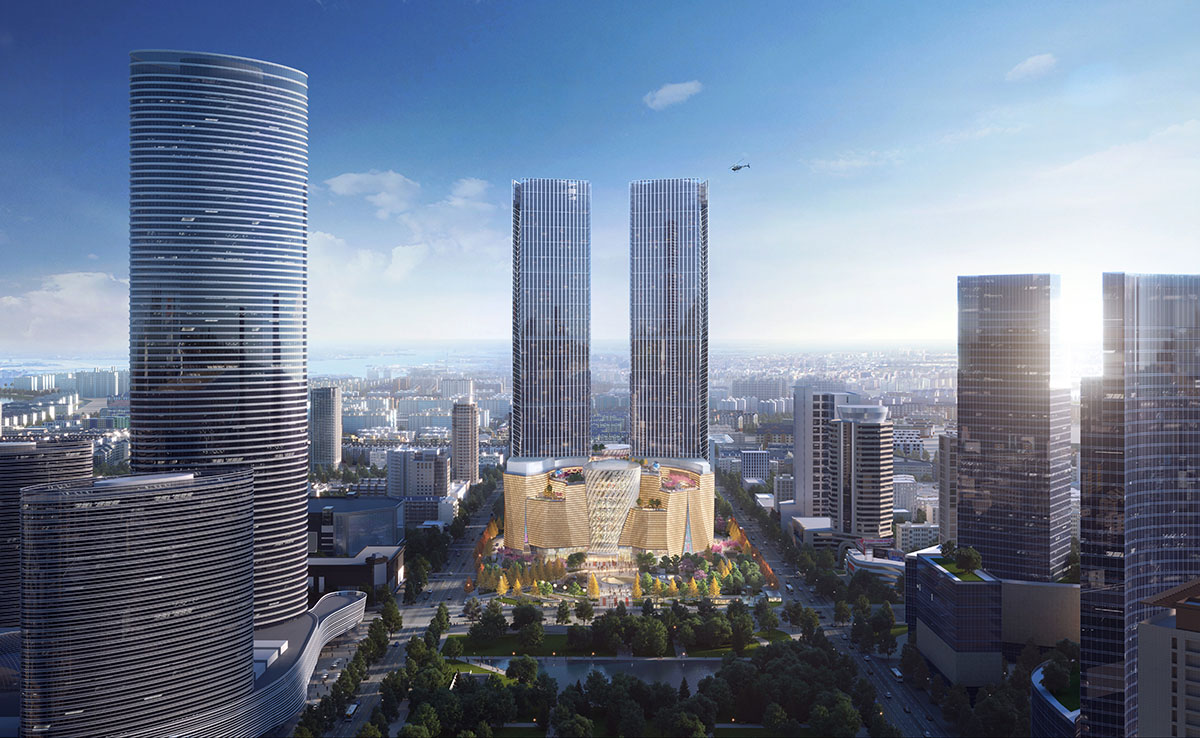
The design is composed of undulating, organically-formed towers that are flanked on either side, which becomes a horizontal expression of earth-toned Italian travertine panels line the podium façade. The building symbolizes the strata of the soil around the roots of the Banyan tree, according to the firm.
After sitting dormant for years following the halting of initial construction for a previous developer, LMCA Design was commissioned by the property’s new owner to intervene and complete the ambitious project. At that time, the twin tower foundations had already been set, and the podium was partially constructed.
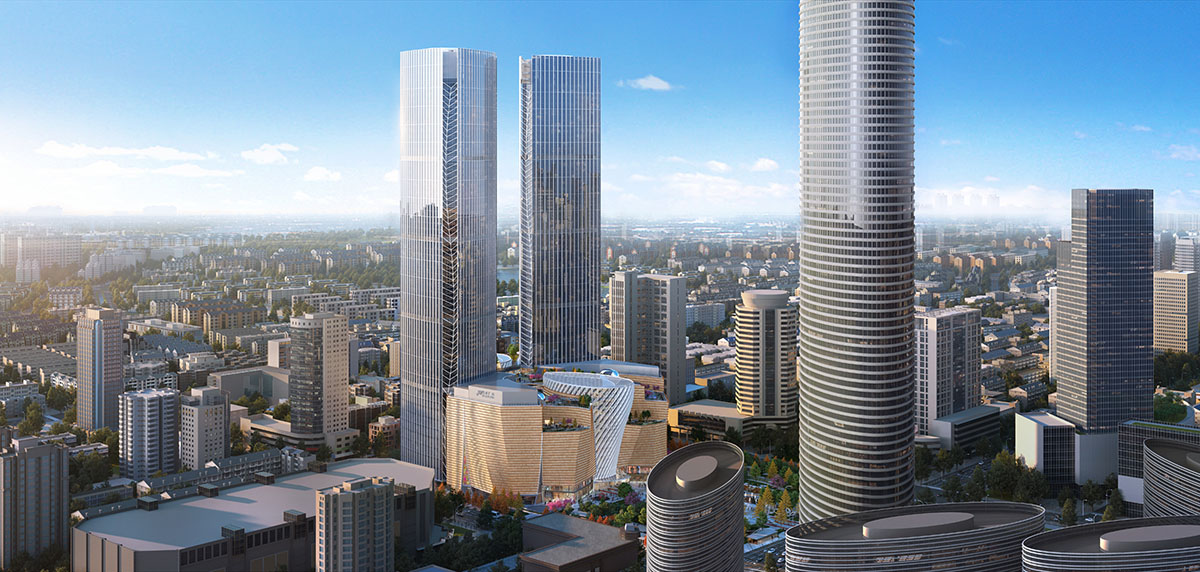
"When I first approached the site, I realized right away that the design was not aligned with the developer’s vision or my own," recalled Li Min Ching, President and Founder of LMCA Design.
"I immediately wanted to know what could and couldn’t be modified and, in some cases, we were impeded by structural restrictions."
Those restrictions applied mainly to the foundations of the twin 60-storey towers, which had already been set with columns driven deep into the ground. While they could not feasibly be altered, Li Min Ching was informed that anything above the 11-story height of the tower could be modified according to his own design, all the way up to the 60th floor.
In respect to the retail podium, only the portion connecting to the towers had been built, with the bulk of the spaces still left to be developed.
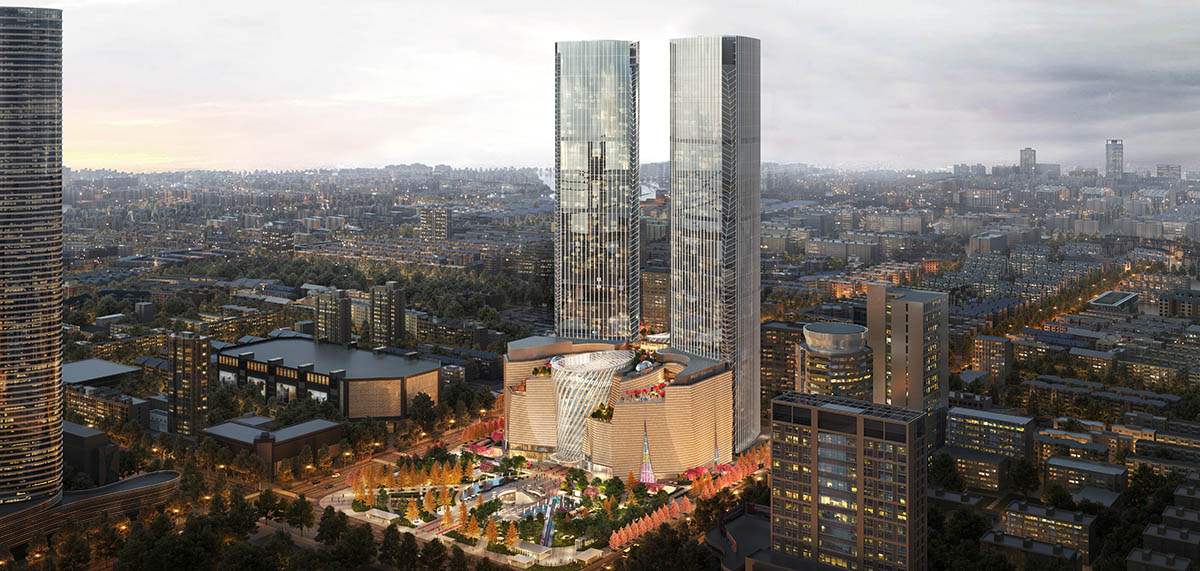
Rebirthing the roots
Given the site’s prominent location as a gateway between the urban city core to the south, and a central park to the north, LMCA endeavored to visually connect the project’s front façade to the city’s green initiatives.
That process extends the flow of green space through a public plaza on the ground level, where beautifully manicured landscaping forms part of an urban green space masterplan designed by Ohtori Consultants Environmental Design Institute.
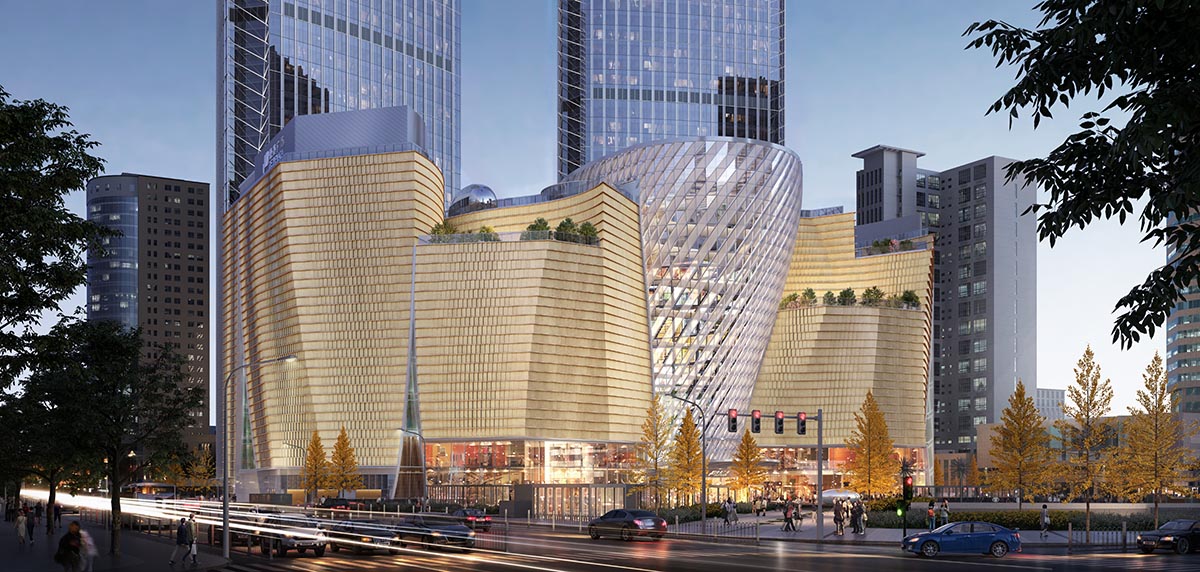
In keeping with the theme of the city’s expanding green philosophy, and the environmental sustainability goals of the China Green Star rating system (the project has received a 2 out of 3-star rating), Li Min Ching felt that the Deji Plaza Xuzhou project should reflect its surrounding natural elements in some shape or form.
He began to imagine organic shapes and textures that could be architecturally adapted to the project and, in the process, embraced the Banyan tree as an ideological guide.
Accordingly, LMCA’s new design would draw aesthetic and functional inspiration from the organic forms and actions of the Banyan tree and its complex root system.
"A Banyan tree is not born of its own seeds, but rather it seeds an existing older tree and rebirths it in an elegant and organic new form,” he explained. "I thought that that was entirely appropriate for this project that was undergoing a massive transformation."
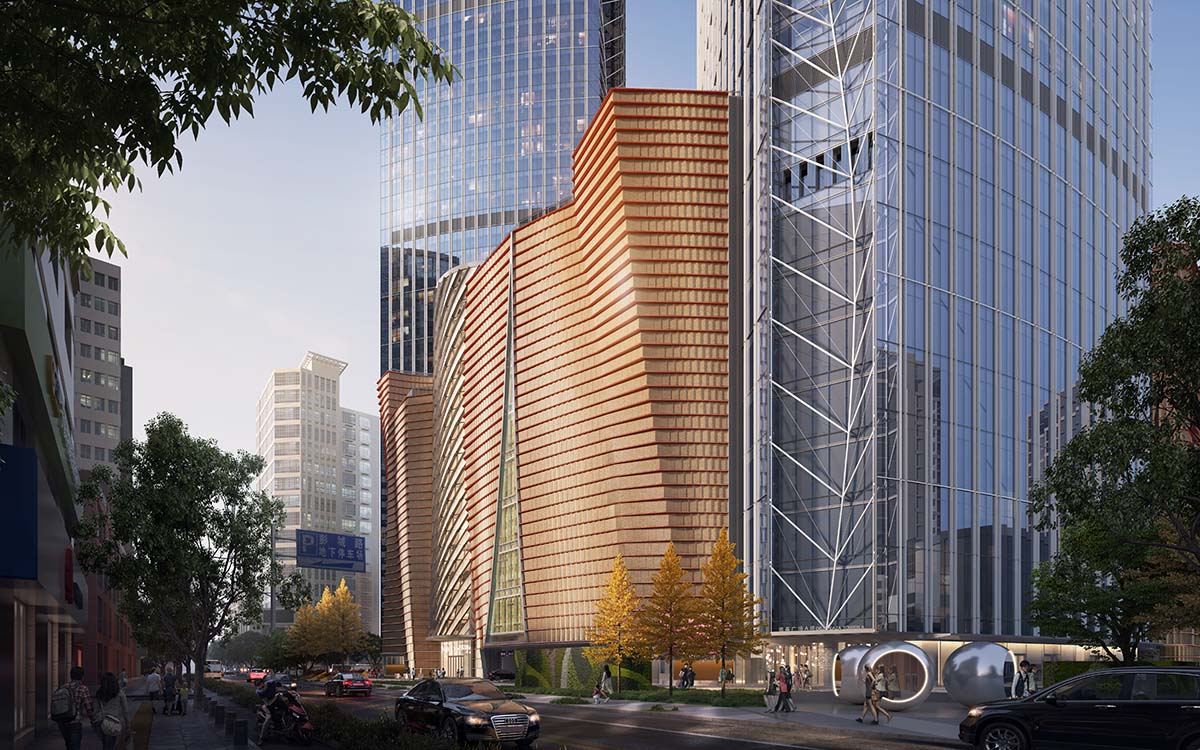
Down to earth
Armed with the freedom to alter the structural, aesthetic, and programming plans for the podium, LMCA completely reimagined the space with new floor-to-floor heights and a re-programmed design that injects art and culture into its soul, reflecting the new developer’s status as one of the largest private art collectors in China.
The resulting design will house designer boutiques, an art gallery, IMAX cinemas, exhibition space, and more, and pieces of the owner’s art collection will be interspersed in newly developed spaces throughout the project.
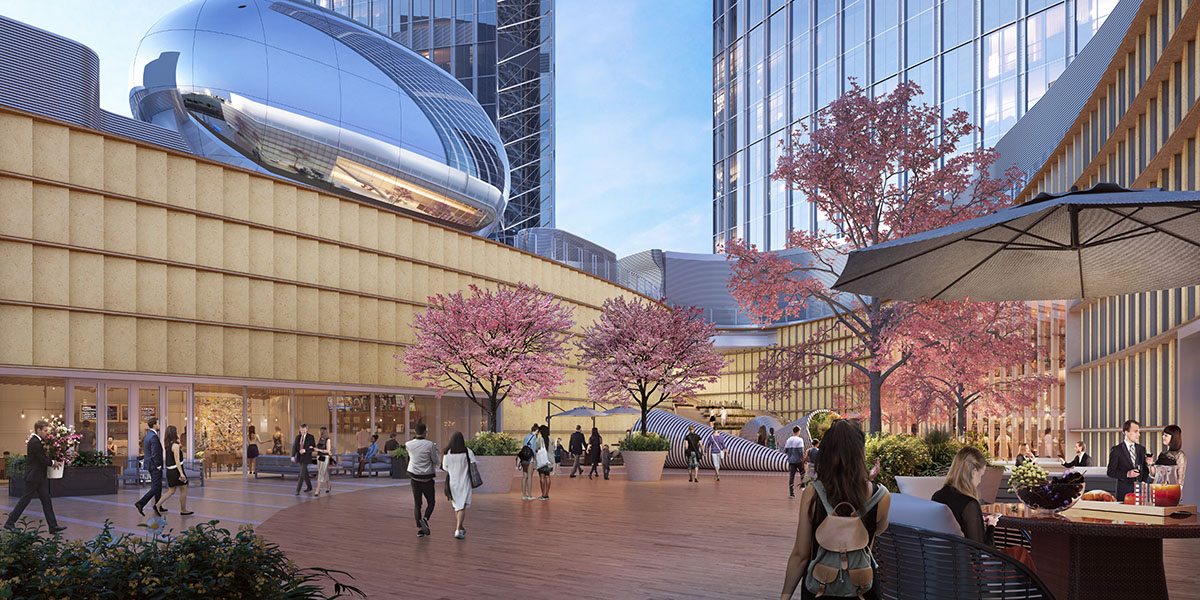
"One of the biggest challenges we faced was determining how to optimize the programming and floor heights to align with the developer’s vision for its usage," noted Li Min Ching.
"We repositioned and repurposed most of the existing slabs and structure to save on natural resources, and to ensure that we didn't waste any of the embodied carbon already used in the previous construction."
With part of the foundation already built, the firm was restricted in terms of the amount of wiggle room it had for moving the perimeter columns.
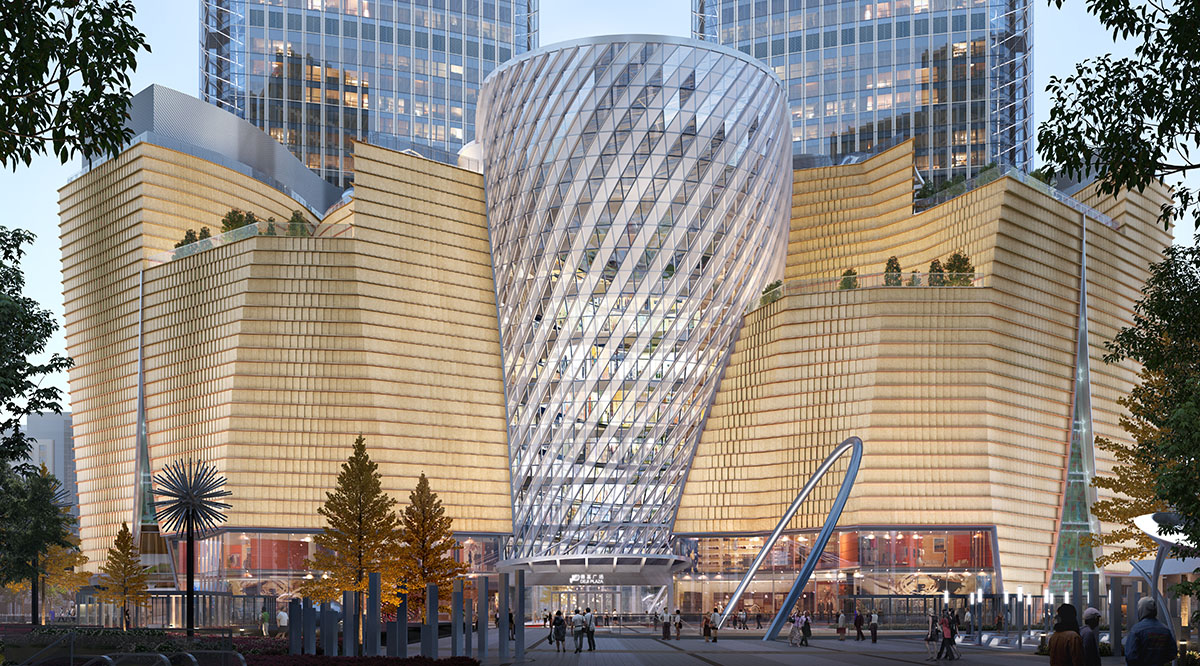
Nevertheless, they were able to make minor movements that opened the door to a new design approach that positions the entire pedestrian experience at the forefront, from the external entrance through to the main atrium. To position the latter as a central gathering space and focal point, the firm moved the original atrium to a more central position in the plan to ensure efficient retail circulation within a defined loop.
As a central core element dividing two defined wings of the podium, as well as the twin towers rising behind it, alternating frosted and clear glass diagonal slats define the bulbous podium entrance and atrium, twisting upwards like roots of a Banyan tree.
In all, 17,439 individual panels complete the podium’s natural stone façade, with louvers embedded in the design to enable airflow through gaps created by their rotation.
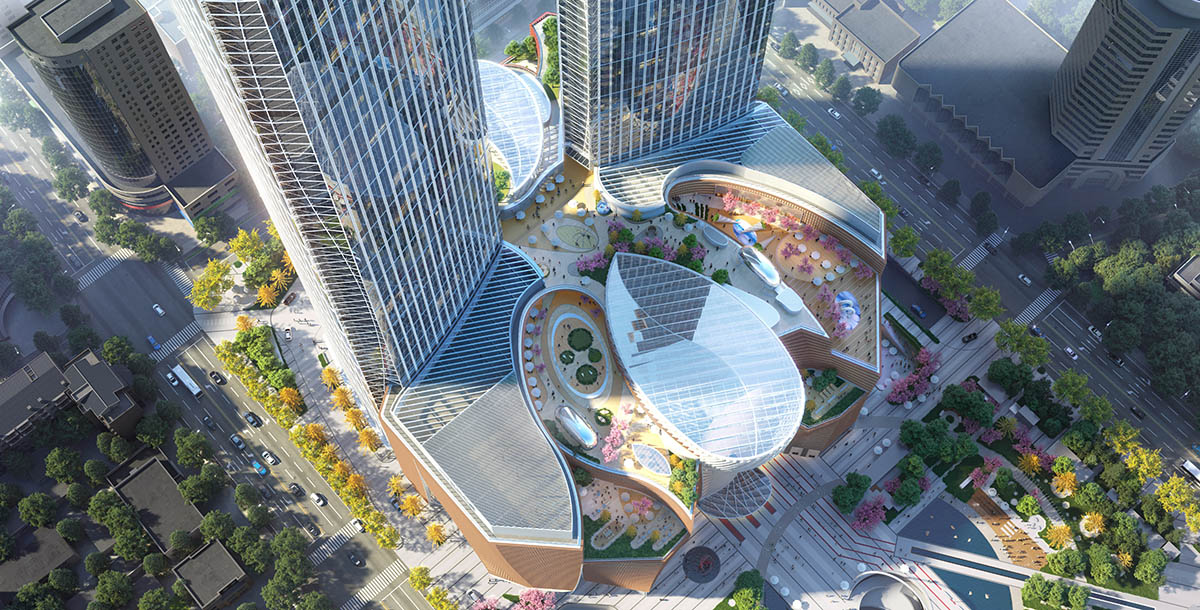
"Retail facades require a certain amount of ventilation, and this solution provided us with a sort of screen element," explained Mr. Ching. "By rotating the panels and creating openings, we are able to create an effective airflow."
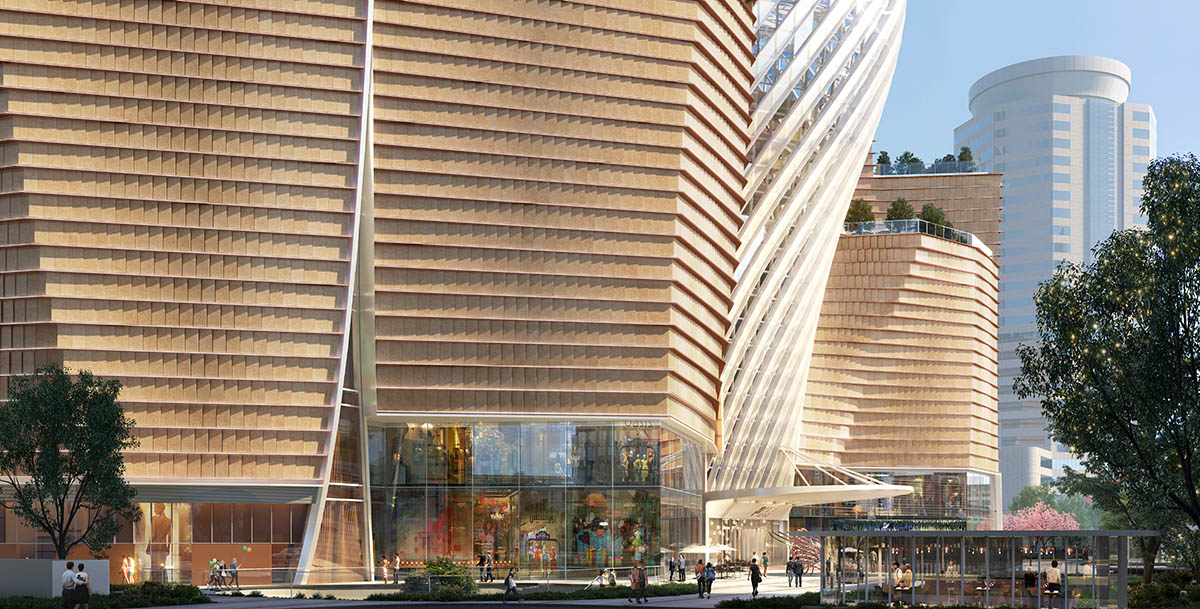
A green light
As part of the complex’s master plan, the landscaping programming is an important element that will independently add botanical gardens, water features, art installations, an amphitheatre, and much more to the plaza area in front of the buildings.
In keeping with the green spirit of the northern facing cityscape, LMCA incorporated numerous green spaces into its design, including multiple rooftop terraces with unobstructed views on varying levels of the podium.
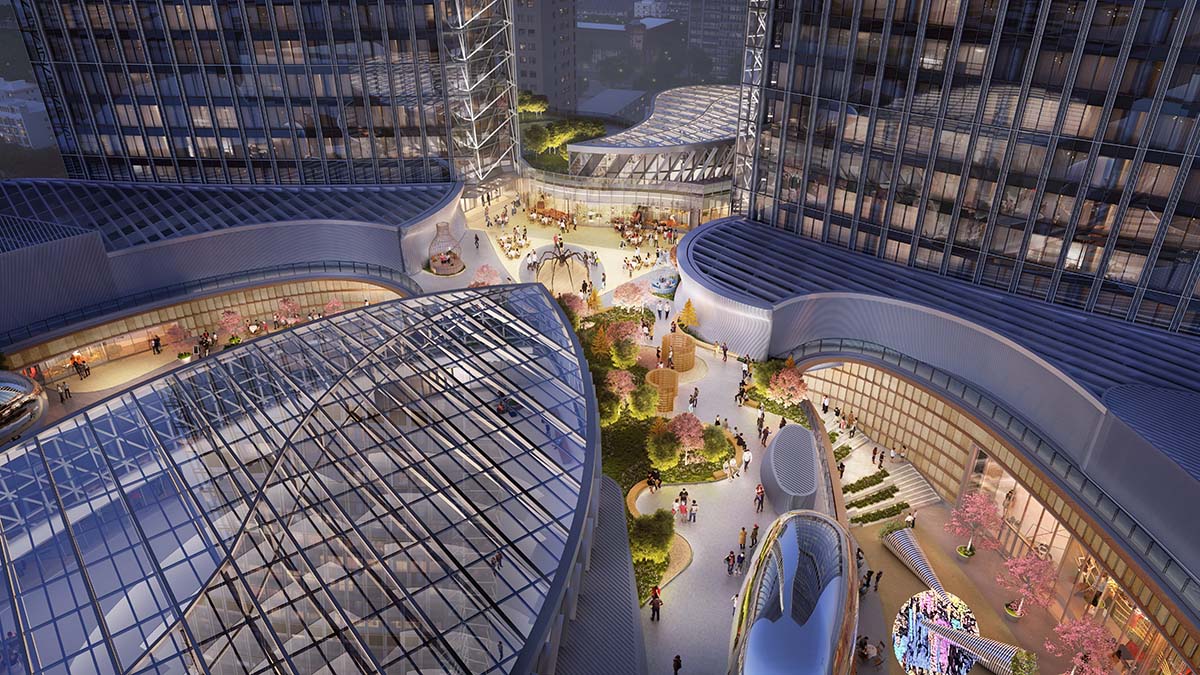
"The original design was undeveloped for public terraces when construction ceased, so we are creating seven unique spaces at varying levels of the podium," notes Mr. Ching.
"The terraces will provide a variety of unique experiences, and we’ve already had proposals for an outdoor food and beverage establishment, an artistic walk, an exotic garden, a sunshine deck, an observation platform, an aesthetic lifestyle space, and a visual pattern garden."
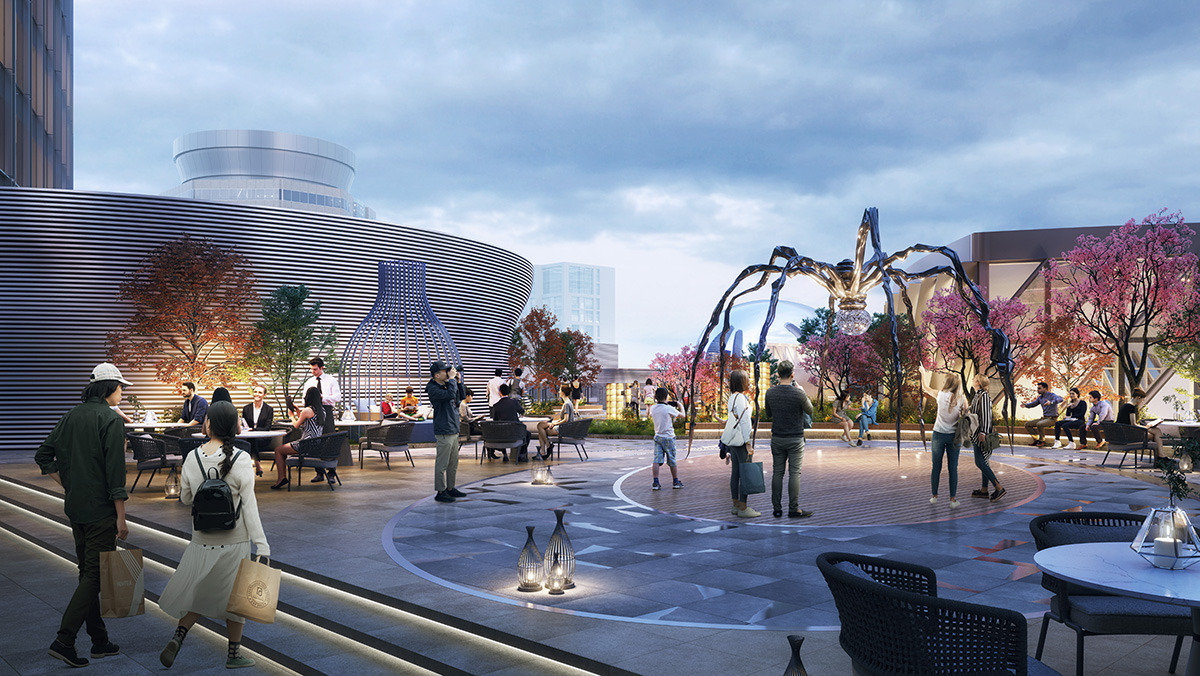
The sky is the limit
While the original plan called for one residential tower and one office tower, LMCA’s redesign will create two luxury residential towers comprising 1,326 units ranging from studio condos to much larger floorplans.
Tower residents will also be able to directly access the podium complex through a private residential lobby on the ground floor.
Grounded in the aesthetic and functional organic forms and actions of the Banyan tree and its complex root system, nature is further reflected in the vine-like sunscreens that wind their way up the spines of the Deji Plaza Xuzhou residential towers, providing shade to its operable windows. In close collaboration with the building engineers, LMCA coordinated the strategic placement of ventilation louvers in the schematics of the towers to ensure fresh air circulation and natural ventilation, which reduces the energy consumption of the mechanical systems.
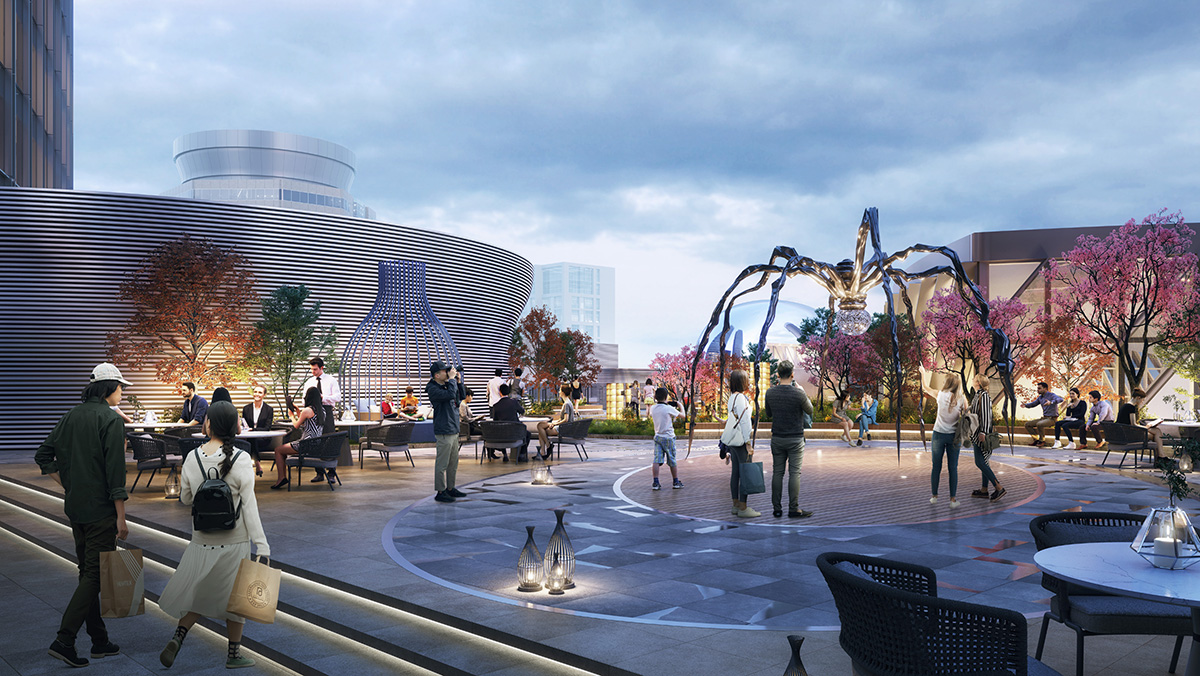
Facing a much more urban landscape to the south, the original design and build provided very few setbacks for the podium. In response, LMCA created some new setbacks to scale the podium down as much as possible, and then designed an undulating façade that twists as it rises to break the massive street wall that had originally been proposed.
"We also added a second atrium to the project to provide the south facing retail area with a lot more natural light than originally proposed," concluded Li Min Ching.
"It was originally designed like a back-of-house, and it felt like a loading dock, so we endeavored to provide it with landmark characteristics that will give it an identity in the cityscape and provide occupants with a grand entrance."
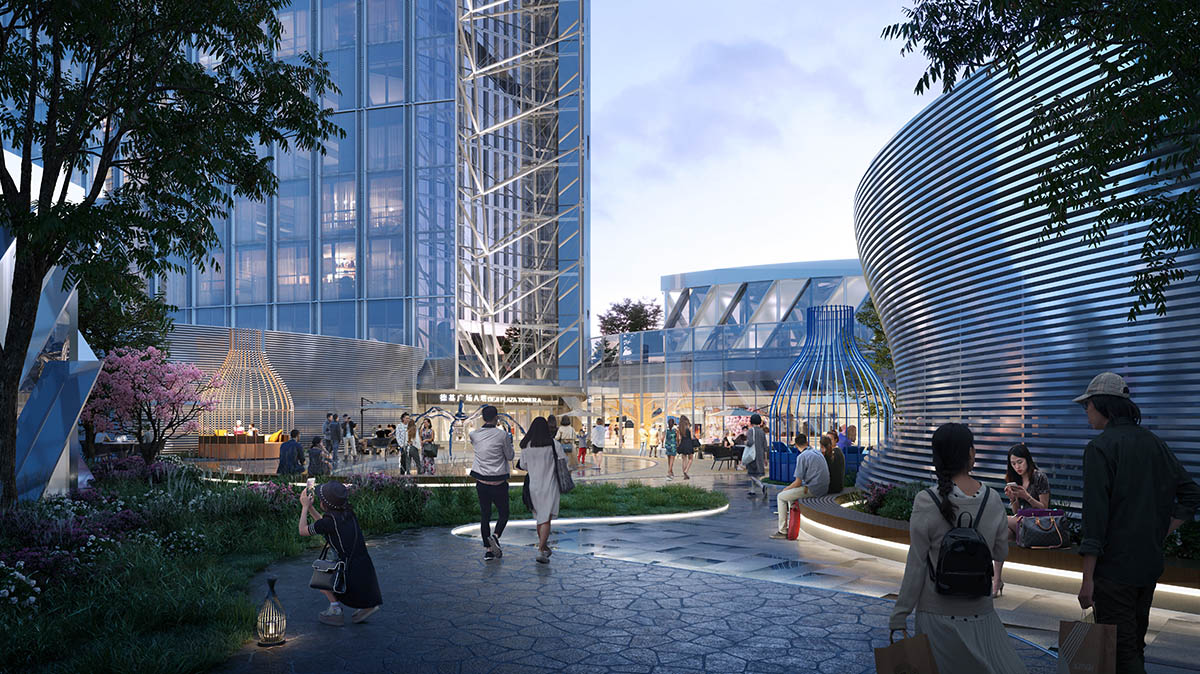
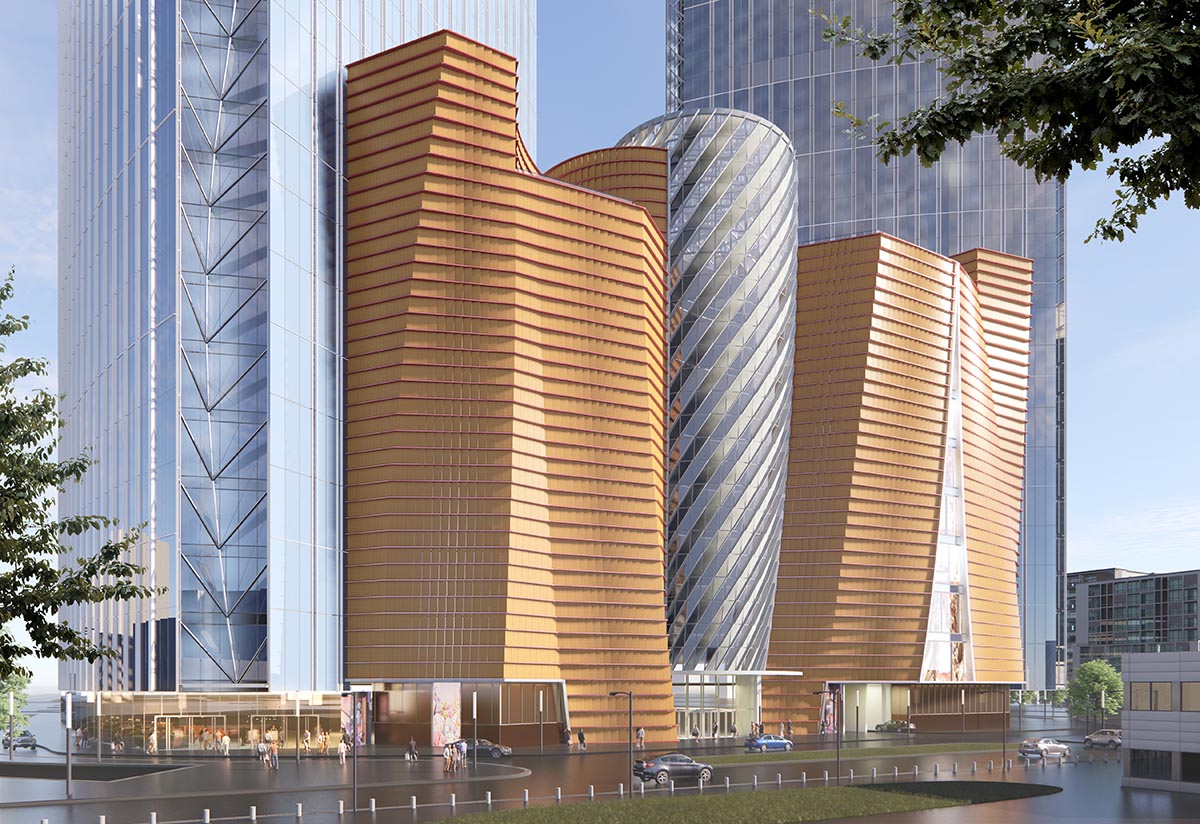
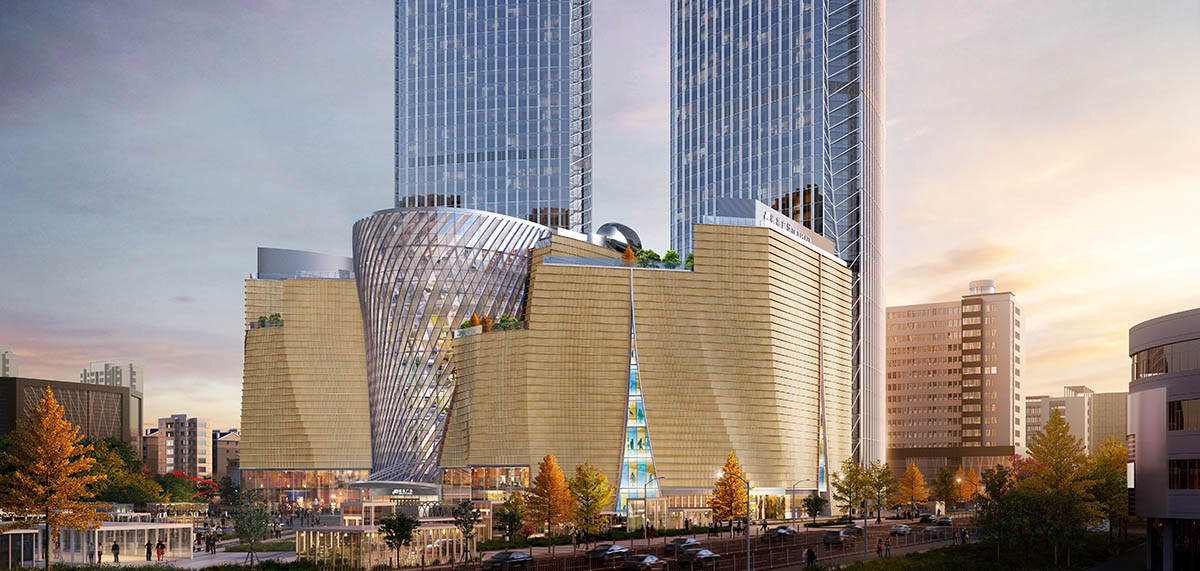
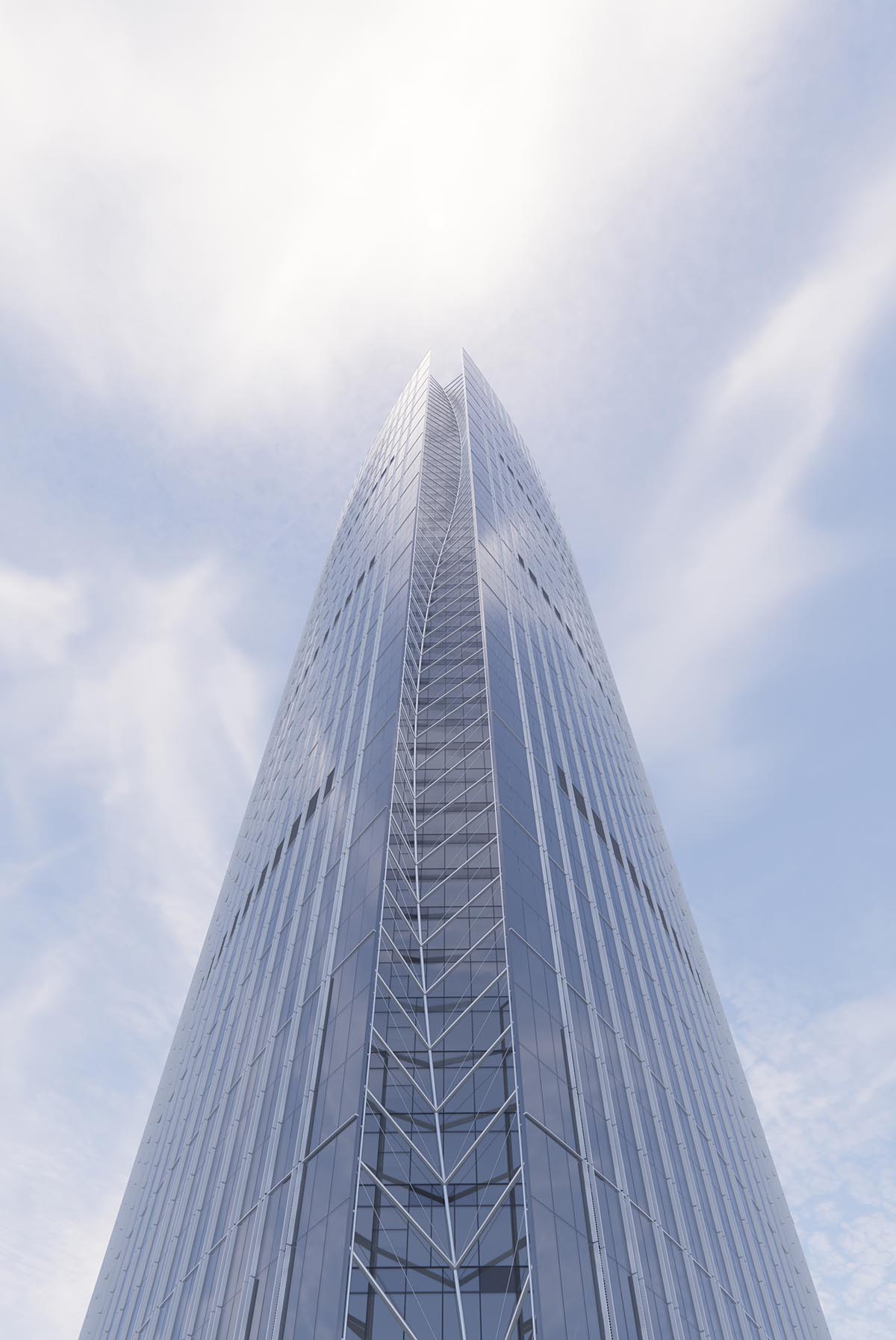
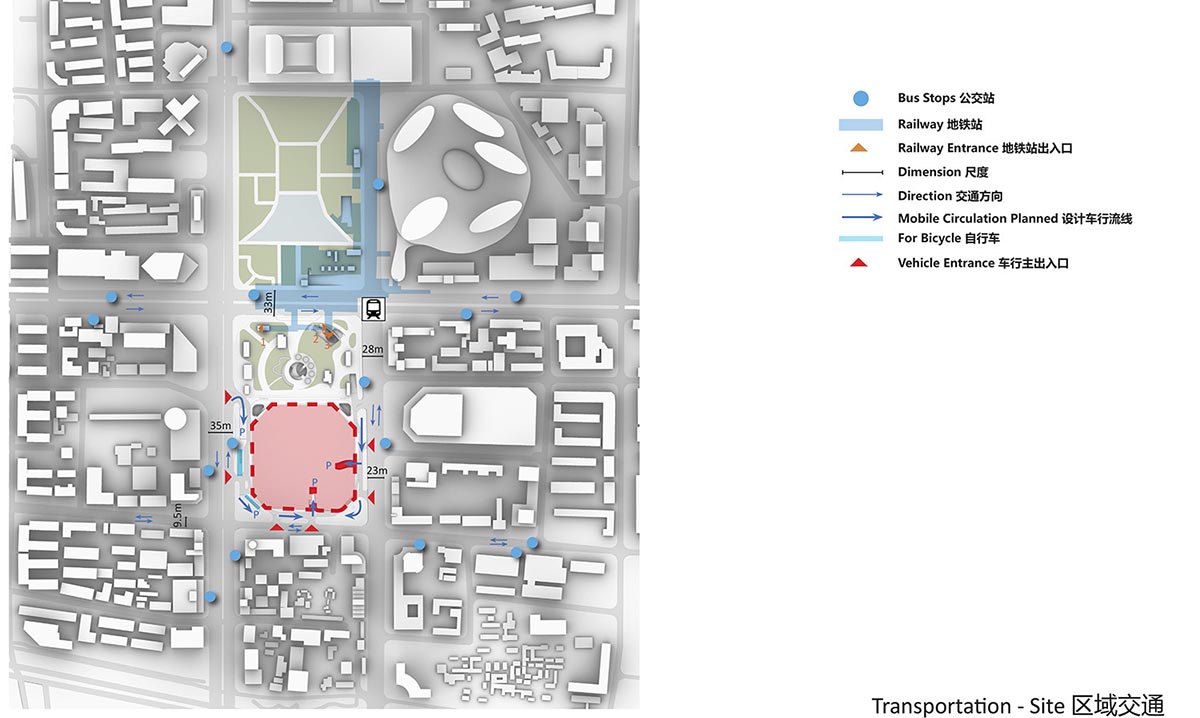
Location plan
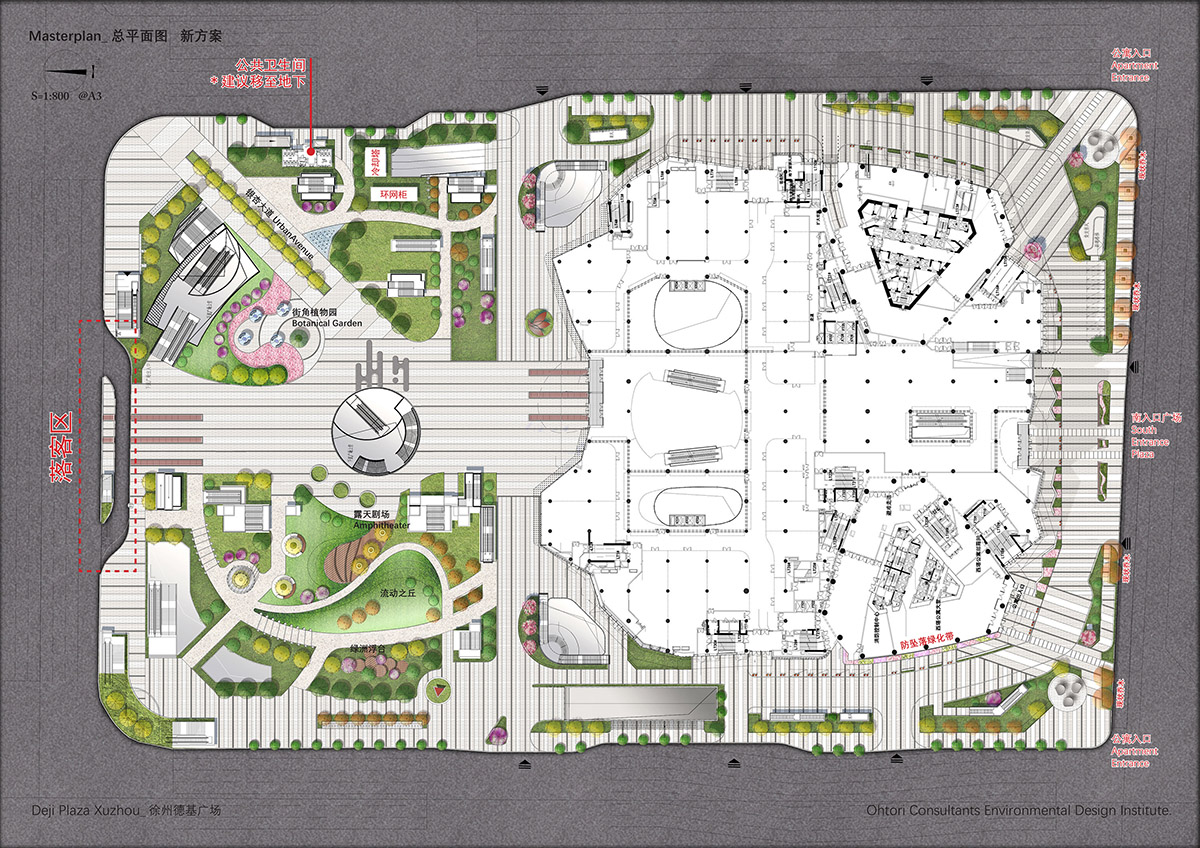
Image © Ohtori Consultants Environmental Design Institute
Masterplan
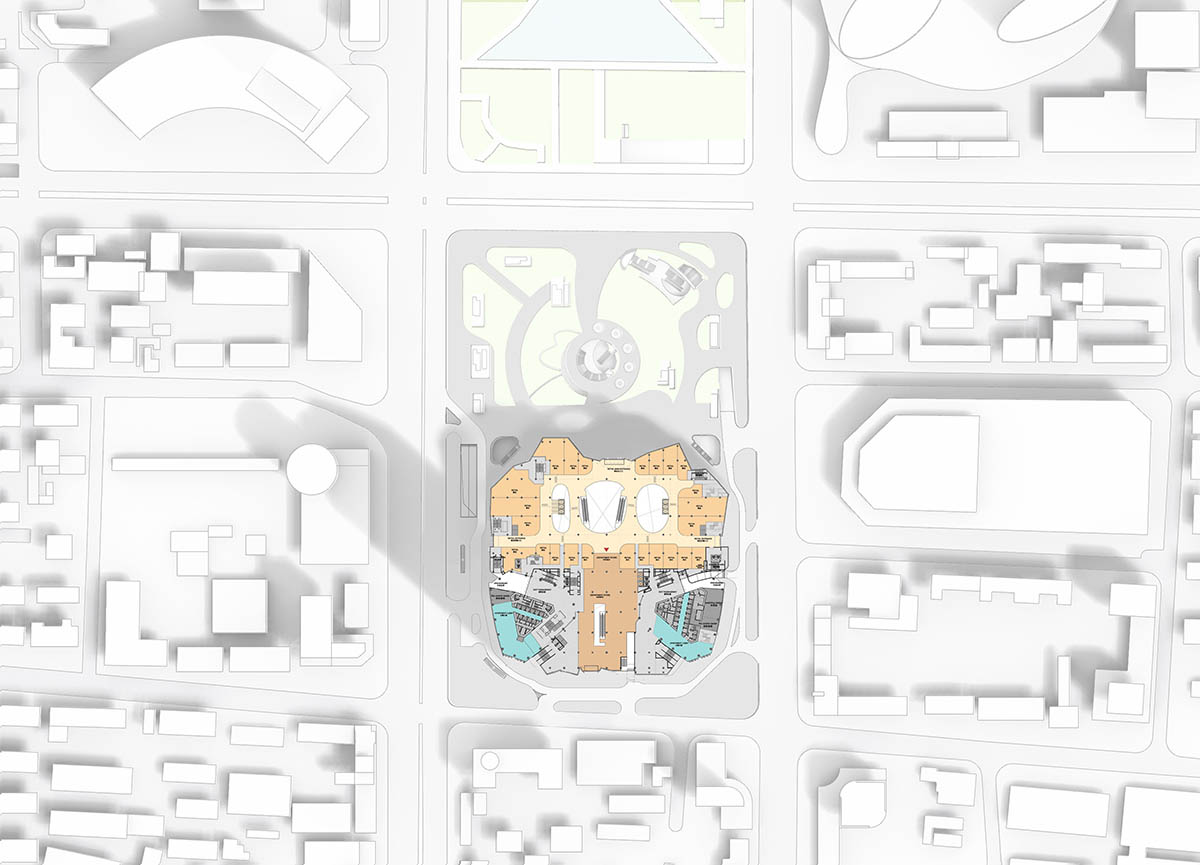
Floor plan

Site plan
The exterior facade and internal core of the project is scheduled for completion in early 2025.
Founded in 2015, LMCA Design (Li Min Ching Architecture & Design) is a full-service architectural design practice focused on delivering refined architecture, master planning, and interiors.
Project facts
Project name: Deji Plaza Xuzhou
Height: 259 m / 850 ft
Size: 351,206 m2 / 3,780,350 ft2
Client: Deji Plaza (Xuzhou) Co., Ltd.
Architect (Lead Design Architect): LMCA Design – (Li Min Ching Architecture & Design)
Current - Local Architect of Record / MEP & Structural Engineer: Nanjing Changjiang Urban Architectural Design Co., Ltd.
Prior - Local Architect of Record / MEP & Structural Engineer: Nanjing Architectural Design & Research Institute Co., LTD.
MEP Consultant: Technova
Façade Consultant: CCAT
Interior / Exterior Lighting Design: UNOLAI Design & Associates, Shanghai Branch
Landscape Design: Ohtori Consultants Environmental Design Institute
Transportation Consultant: AECOM Design and Consulting (Shenzhen) Co., Ltd.
All images © LMCA Design unless otherwise stated.
> via LMCA Design
